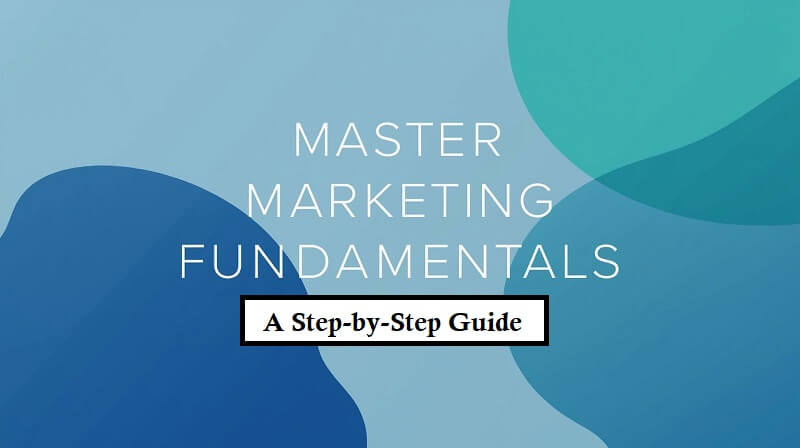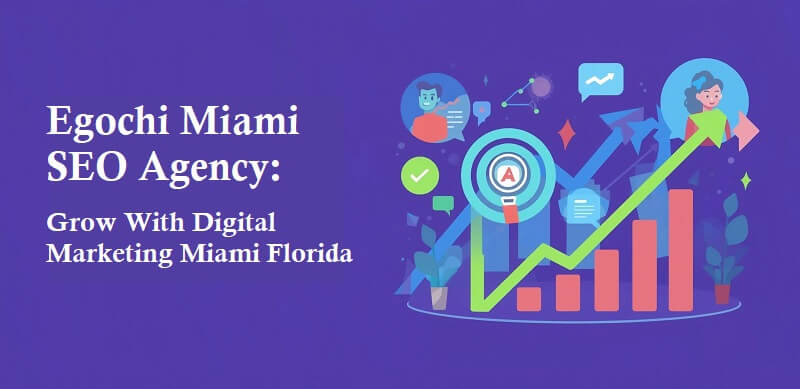Marketing Fundamentals form the foundation of any successful corporation. Whether you are a small startup or an international brand, understanding these advertising basics equips you with the skills to reach your audience, build their trust, and drive sales.
In the competitive age we live in, advertising and marketing is not merely about promoting a product — it’s about creating value. You need to understand your target audience, their desires, and how your solution fits perfectly with their needs. Techsslaash com: Your Digital Growth Partner provides insights and tools that can help you master these principles. This step-by-step guide to advertising essentials will allow you to learn the fundamentals that make marketing powerful and profitable.
Here, you’ll recognize a way to create effective techniques, degree fulfillment, and adapt to fashionable digital trends — even if you’re new to advertising.
What Are Marketing Fundamentals?
Marketing fundamentals are the crucial standards that guide all advertising and marketing efforts — from traditional advertising to modern virtual campaigns.
Essentially, advertising is ready to understand what makes clients behave the way they do and growing techniques that form shopping for selections. While technology is always evolving, these basics by no means trade.
The following are the important thing additives of advertising and marketing fundamentals:
- Knowing what consumers need and need
- Developing a products or services that adds price
- Communicating value thru numerous channels
- Getting the message to the right group of human beings at the proper second
- Establishing long-time period patron relationships
In undeniable English, advertising and marketing concepts guide you from focus to action — from potential customers to unswerving advocates.
The Core Ideas of Marketing
To excel in marketing concepts, you first want to comprehend its essential factors.
The 4Ps of Marketing
Referred to as the Marketing Mix, the four Ps lay the muse of each advertising marketing campaign:
- Product: What you’re selling and how it addresses the customer’s problem.
- Price: How much people will pay for your solution.
- Place: Where and how you deliver your product to customers.
- Promotion: How you tell your value and convince people to buy.
These four factors complement each other. For instance, a premium offering should have a premium price, good distribution, and proper promotion.
The 7 Ps Model
Contemporary marketing builds on the 4 Ps with the addition of:
- People: Employees, clients, and all people who come in contact along with your business.
- Process: Systems employed to provide fees efficiently.
- Physical Evidence: Physical evidence of high quality (with evaluation, packaging, or save format).
Step 1: Understand your target audience
One of the most important basics of advertising is that you have to have a sense of who your target market is. You can’t market everyone. The idea is to target the people who are most likely to benefit from your product.
How to identify the audience
Think of the people you want now:
- Basic details: Think about their age, gender, how far they travel and where they live.
- What impresses them: Notice their interests, what they value and their general views.
- What they really do: Check previous purchases and what they do online.
Once you paint this image of the audience, you can create advertising messages that really connect to them – and touch both emotions and their sense of logic.
Step 2: Doing the Research
Market research is the procedure of gathering and studying statistics to recognise your market’s needs, competition, and possibilities.
This step guarantees your marketing choices are fact-based totally — not via guesswork.
Types of Market Research
- Primary research: Information you collect yourself.
- Secondary research: Information that already exists.
Why It Matters
- Identifies gaps inside the marketplace.
- Knows trends and patron alternatives.
- Guides product improvement and pricing.
Market research provides you with the insights you require to differentiate yourself from others and fulfill your customers’ actual requirements.
Step 3: Creating a Strong Value Proposition
Value proposition tells customers why they have to select your product instead of every other. It’s an articulation of what differentiates your emblem.
For instance:
“Spotify gives you unlimited admission to all songs at any time and everywhere.”
Your cost proposition wishes to be out the front on your advertising campaigns and web website messaging.
Step 4: Develop a marketing strategy
After understanding the audience and value suggestions, the second step to become skilled in basic marketing is to develop a strategy.
A marketing strategy outlines how you want to get what you want.
Important components of the marketing strategy
- Objective: What you want to do (brand awareness, manager, sale).
- Goal Market: Who you are targeting.
- Channels: Where to market.
- Timeline: When each assignment is due.
A good strategy mixes creativity with analysis – a balance between storytelling and measurable performance.
Step 5: Implementing Digital Marketing
In 2025, advertising fundamentals aren’t complete without a grasp of virtual advertising.
Digital platforms permit you to attain each person inside the global at a low cost price.
Important items in digital marketing
- Content marketing: Publish educational content with your team.
- Social Media Marketing: Promote your brand on networks.
- Search Engine Marketing (SEO): Make your website go higher.
- E -Post Marketing: Living targeted content to customers’ inboxes.
- Paid ads: You can easily reach potential buyers.
Digital marketing offers you with measurable results — you could see each click, affect, and sale.
Step 6: Branding and Positioning
Your brand is not your brand or your coloration scheme — it’s how others perceive you.
Elements of Branding
- Brand identity: name, design, tone and visual style.
- Brand Personality: The emotional face of your business.
- Brand promise: What customers can consistently expect from you.
Positioning, alternatively, determines where your emblem stands within the customer’s mind as compared to competition.
Step 7: Advertising and Promotion
Advertising is one of the maximum conspicuous advertising and marketing additives. It’s all about awareness, introduction and selling with creativity and consistency.
Typical Advertising Media
- TV and Radio Commercials
- Internet Ads
- Print Media
- Outdoor Advertising
Your promotion mix is based on your audience. Online advertising is better for ROI and measurement for digital-first organizations.
Campaigns including coupons, contests and referral programs also generate logo commitment and loyalty.
Step 8: Customer Relationship Management
Customer storage is just as important as procurement. This is where CRM – an important aspect of the marketing foundation – is a role.
Why CRM Matters
- Aids client interactions tracking.
- Enhances purchaser satisfaction.
- Facilitates customized advertising.
Top CRM Tools
- HubSpot
- Salesforce
- Zoho CRM
A strong client courting begets repeat enterprise, phrase-of-mouth, and extra logo loyalty.
Step 9: Measurement of marketing performance
You can’t repair what you don’t have. Monitoring of the general performance ensures that your advertising effort will be successful.
Key metrics to monitor
- Website site visitors
- Conversion fees
- Customer acquisition value
- Return on funding (ROI)
- Social media engagement
You can music your campaigns’ performance in real time using tools which include Google Analytics, SEMrush, or Meta Business Suite and alter thus.
Step 10: Embrace New Marketing Trends
Competition in marketing optimization remains fierce, but the only means of survival is competitiveness.
Trends in 2025
Marketing automation is powered by AI: Automation of content creation is performed by tools such as chatbots and Jasperia.
- Voice Search Optimization: Voice assistants are revolutionizing and are looking for conduct.
- Personalization: Personalized content material enhances personal leisure.
- Sustainability Marketing: Brands that prioritize sustainable practices are depended on.
- Influencer Marketing: Working with area of interest creators creates right engagement.
Knowing those traits means that your advertising and advertising and marketing basics remain present day in a fast-converting panorama.
Step 11: Creation and storytelling
Content is the heartbeat for newer advertising and marketing. This is not promotion – this is storytelling.
Tips to create successful content
- Teaching before selling.
- Use images to attract attention.
- Tell real memories that the audience can relate to.
Step 12: To build customer confidence and brand loyalty
- Buy from brands they trust.
- ways to build trust
- Deliver the extraordinary regularly.
- Offer clear communication.
- Encourage certificates and evaluations.
- Provide good customer service.
If clients sense appreciated, they end up logo advocates — sharing the word with pals and their own family.
Step 13: Utilizing data and analyzes in marketing
Smart advertising and marketing comes from statistics-driven choices.
Analytics tools enable you to look at what is succeeding and what’s failing.
Examples of Actionable Data:
- User demographics
- Behavior waft
- Conversion paths
By knowing those insights, you could song your campaigns and maximize performance — an essential part of advertising and marketing standards in the digital age.
Step 14: Marketing Ethics
Ethics in advertising and marketing implies selling your merchandise truly and responsibly.
Don’t make false claims or use manipulative hints. Ethical advertising builds long -term credibility and resilience.
Examples of ethical marketing practice
- Transparency with pricing
- Customer privateness appreciate
- Refraining from deceptive commercial
Customers nowadays appreciate authenticity — moral advertising is not simplest accurate; it is good enterprise.
Step 15: Marketing Fundamentals of the Future
The advertising and marketing concepts are ageless, however the structures and gear will hold evolving.
Look out for those developments inside the subsequent several years:
- AI-powered personalization at scale
- AR/VR-enriched brand stories
- Hyper-neighborhood targeting
- Blockchain integration in advertising analytics
The takeaway? Remain bendy. Mastering advertising principles presents you with the muse to succeed — whatever the marketplace looks like.
Conclusion
Marketing standards are the working policies that enable you to have interaction, connect, and convert your audience in a hit manner. By knowing your clients, developing a clear cost proposition, and the usage of both creativity and analytics — success is inevitable.
Whether you’re a newcomer or an expert, these advertising fundamentals will assist you in developing techniques which can be records-driven, moral, and human-centric. So, start today — research, attempt matters out, and optimize your advertising strategy. The greater solid your foundation, the more effective your brand might be over the long time.









